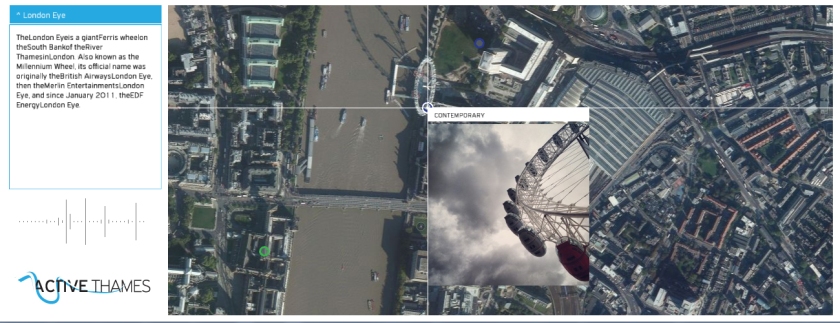“We shape our buildings; thereafter, our buildings shape us.” Churchill. W.
In order to interpret the spatial and temporal importance of Thames as a main driver of activity in London, we decided to focus specifically on the construction activity. The buildings and bridges of Thames have been the incubators that brought growth and prosperity to the city, making London the metropolis that it is today. They are the remaining traces of activity with a timespan of existence that reaches one thousand years.
Today a walk by the river can reveal key aspects of all the important periods throughout the history of London. Buildings and bridges are until today being built by the Thames proving in this way that activity by the river is crucial to the function of the city.
To visualise this spatio-temporal process that takes place in London for centuries we created first a time-lapse video that visualises the growth of London through time. The focal points are two. The first is the river Thames as it is central to this process and the second are the buildings of Thames that have been acknowledged by R.I.B.A. Their position and the relationship that they maintain with the development of the bridges on the river are highlighted through a timespan that spreads from 1200 AD to 2014 AD.
For the purposes of this project we used the listing of the buildings that are included in the Open House London architectural showcase that takes place every year in September. This year Open House will be carried out within the framework of Thames Festival.
Today the use of these buildings have changed a lot as former factories are turning into internationally acclaimed museums and lighthouses are becoming the home of various art projects. To trace these changes as well as the way that they are conceived by the citizens we decided to combine historical information with real-time activity in the city.
“We must consider not just the city as a thing in itself, but the city being perceived by its inhabitants.” Lynch. K.
The application that we created using Processing is combining historical information in the form of snippets and labels with real time activity on Instagram. Each of the buildings has a unique code in the Instagram API. We used this code to trace activity that is being recorded by the users. The dynamic map is provided by the Unfolding maps library on processing.
The final result is ever changing as users are uploading more photos. In this way we are able to trace activity through architecture. The photos are updated every minute and change from landscape view to self portraits gives hints on the level and the type of activity taking place at each building.
“Everything proceeds as if space had been trapped by time, as if there were no history other than the last forty-eight hours of news, as if each individual history
were drawing its motives, its words and images, from the inexhaustible stock of an unending history in the present.” Auge.M.
The quote by Auge in his book “Non-Places” was the inspiration for the final project of Open Thames. The connection between time, space and the image (here as a small fraction of our perception) have always been central to our perception of public space, public buildings and shared urban experience. The question that is posed regarding activity on public space and shared experience of the urban environment is one about individuality and collectivity. Today – that the central square of the village with the central clock are not setting the time and place of activities in the community – how can we be synchronised with the various activities and places in order to meet, share and connect with other individuals?
The application that we created is facing those issues by collecting real time data regarding the activities that are bound with the most important buildings of Thames. The clock that we created is merging the multiple personal perceptions of the city into one puzzle of images. In this way the user can trace change in the photos and understand the level and the type of activity.


